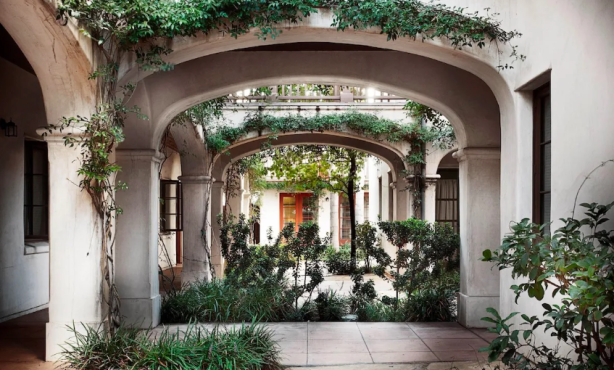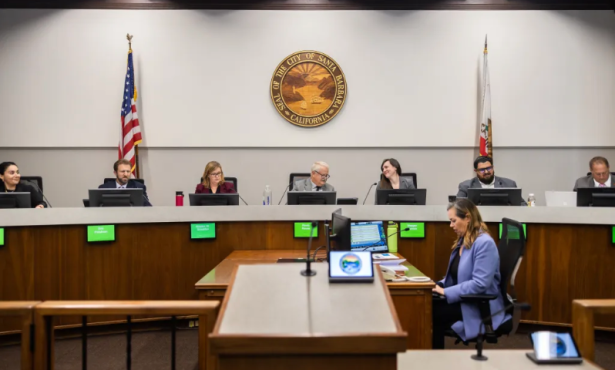Kicking the ‘Plan’ Down the Road
Council Defers on How Much Density to Allow in Plan S.B.
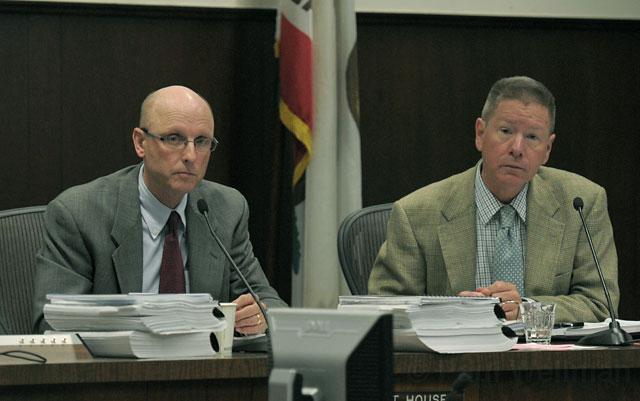
The good news is that Plan Santa Barbara did not blow up in the hands of Santa Barbara’s politically polarized City Council this week, as it easily could have. Instead, the council opted to refer the contentious debate over increased housing densities — at the core of the proposed new plan — to an ad hoc subcommittee for intensive review and analysis.
The bad news is that the subcommittee will be headed by Councilmembers Das Williams and Dale Francisco, always a volatile mix of ideological differences and alpha male egos. Also included in the subcommittee will be Councilmember Frank Hotchkiss. Williams, Francisco, and Hotchkiss are slated to meet several times and report back to the council as a whole in two weeks.
Plan Santa Barbara is the name given to the long-running effort to rewrite Santa Barbara’s General Plan, the fundamental planning document guiding growth and development over the next 20 years. Thus far, city hall has spent five years and $3 million on this undertaking, a marathon public process that’s illuminated an intractable divergence of community opinion on the question of increased housing densities within certain neighborhoods.
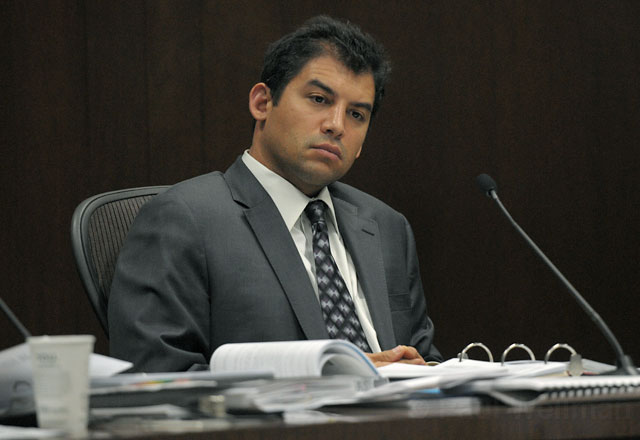
On one hand are champions of housing affordability and sustainability, who argue that by allowing for — and promoting — increased densities downtown and along transit lines, developers can be encouraged to build smaller units and rental units that will be “affordable by design.” This, in turn, will rectify the much discussed “jobs-housing imbalance” that’s caused tens of thousands of workers to commute daily from their homes outside of Santa Barbara to jobs on the South Coast. Or, so the theory goes. This approach has been embraced with varying degrees of enthusiasm by Mayor Helene Schneider and Councilmembers Das Williams, Bendy White, and Grant House.
On the other side are traditional slow-growthers and no-growthers, who worry increased densities will destroy Santa Barbara’s small town character while failing to make an appreciable dent in housing affordability. Likewise, they fear that the densification of downtown neighborhoods will cause increased traffic congestion. They have expressed skepticism, hostility, and suspicion of “transportation demand management strategies” aimed at reducing such congestion by promoting busing, biking, walking, and other alternative transit modes. While only three members of the council — Dale Francisco, Michael Self, and Frank Hotchkiss — subscribe to this approach, that, it turns out, is enough to bottle up any changes to the General Plan. For such momentous votes, a five-vote super-majority is required.
For two days this past week, the council sought to wrestle this greasy pig into submission. There was agreement — by a 5-2 vote — to limit the amount of new commercial development over the next 20 years to 1.3 million square feet. (Councilmembers House and Francisco — normally on the opposite side of most issues — objected, arguing the number should be higher.)
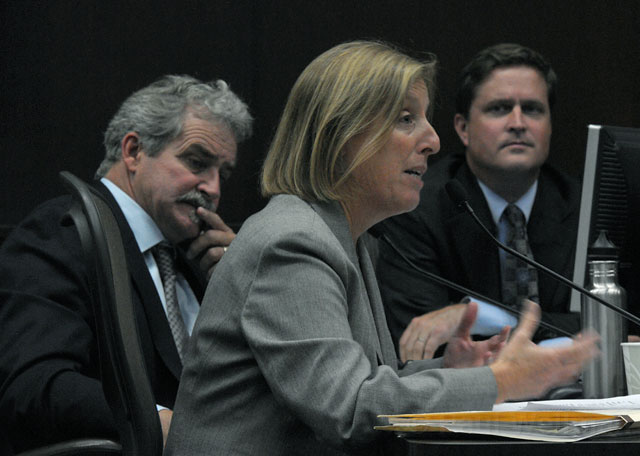
By contrast, the current General Plan, which governed growth for the past 20 years, allowed 3 million square feet of new commercial and nonresidential development. In practice, 1.8 million square feet was either built or approved in that time. But even that figure can be misleading. That’s because a very large chunk of that development involved the renovation and remodel of Cottage Hospital.
There was also agreement not to kill outright a package of transportation demand management (TDM) strategies — much reviled by slow-growth traditionalists and the council minority — but to include them, however hypothetically, as a possible approach for some remote later date. That’s assuming, of course, the downtown business community does not come unglued.
The single most effective TDM strategy on the table, again hypothetically, is paid parking. Traffic engineers agree that by charging for downtown parking, downtown workers will either find some other way to get to work or find somewhere else to leave their cars. But business owners contend that the elimination of free parking — and the convenience that entails — will chase potential customers to shopping malls away from the urban core. And they’ve been quite vehement in their opposition.
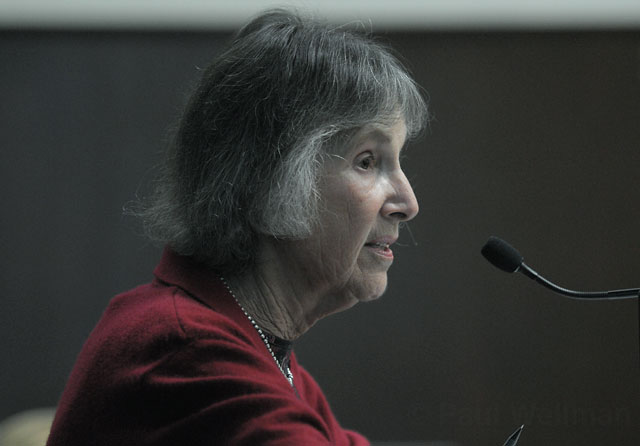
Although the affordability advocates at city hall insist the TDM package is essential for the increased densities to work — otherwise congestion will become a much bigger problem — they’ve agreed to a tactical retreat for several reasons. In the short term, they recognize the TDM package is a certified deal killer. But long term, they recognize that free parking’s days are probably numbered, for reasons that have nothing to do with Plan Santa Barbara.
Every year, the downtown parking garages get multimillion-dollar maintenance subsidies from the city’s Redevelopment Agency. But by state law, that agency must go out of existence in the next few years. When that occurs, the parking districts will have to find another source of funding to make up for the millions lost. When that time comes, free parking will be a likely target.
Left to a future date is resolution of the density debate. Superficially, it would appear there’s consensus on both sides that the status quo is not working. That’s because current zoning and planning policies effectively encourage developers to build large, high-end condos, like the ones on Chapala Street that sparked the recent building-height showdown.
Affordability advocates contend Santa Barbara’s limited housing build-out should be focused on providing middle-class housing, objecting to the multimillion-dollar price tags these “steroidal condos” — in the words of Councilmember White — sell for. And preservationists have lamented the violence such development inflicts on Santa Barbara’s historic skyline. Still, this mutual antipathy to recent developments has not been sufficient to forge common ground.
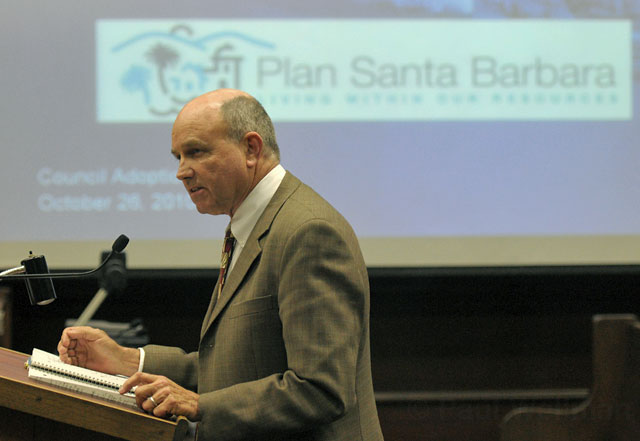
On the table is a plan to give developers incentives — greater densities — to build smaller units, rental units, or employee housing units. In addition, the affordability crowd — which successfully fought the recent ballot initiative to limit the height of new downtown buildings to 40 feet — agreed to put de facto height limits in the new plan. They have offered a provision which that require a super-majority vote by the Planning Commission to approve anything higher than 45 feet.
The council minority has not been assuaged. Its members remain concerned that this approach is predicated upon utopian and experimental notions that may work out well in the social engineering blue prints of urban planners, but not in the real world. In addition, some have philosophical — and practical — doubts how far government should intrude in the housing market to expand opportunities for affordability. To the extent the new General Plan should encourage affordable housing, they argue, it should be for rental housing. The rub, of course, is that few developers have any interest in actually building rental housing, no matter what incentives exist on paper.
How much wiggle room exists between the two camps has yet to be probed with any force and determination. Within the next two weeks, Williams, Francisco, and Hotchkiss presumably will discover the answer to that question. On that outcome will hinge the future of Plan Santa Barbara.


